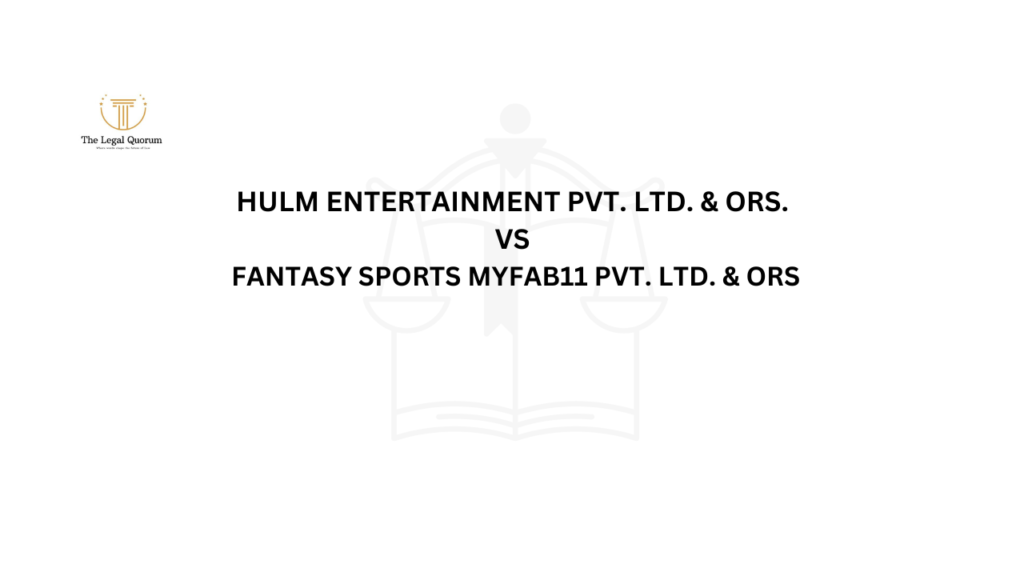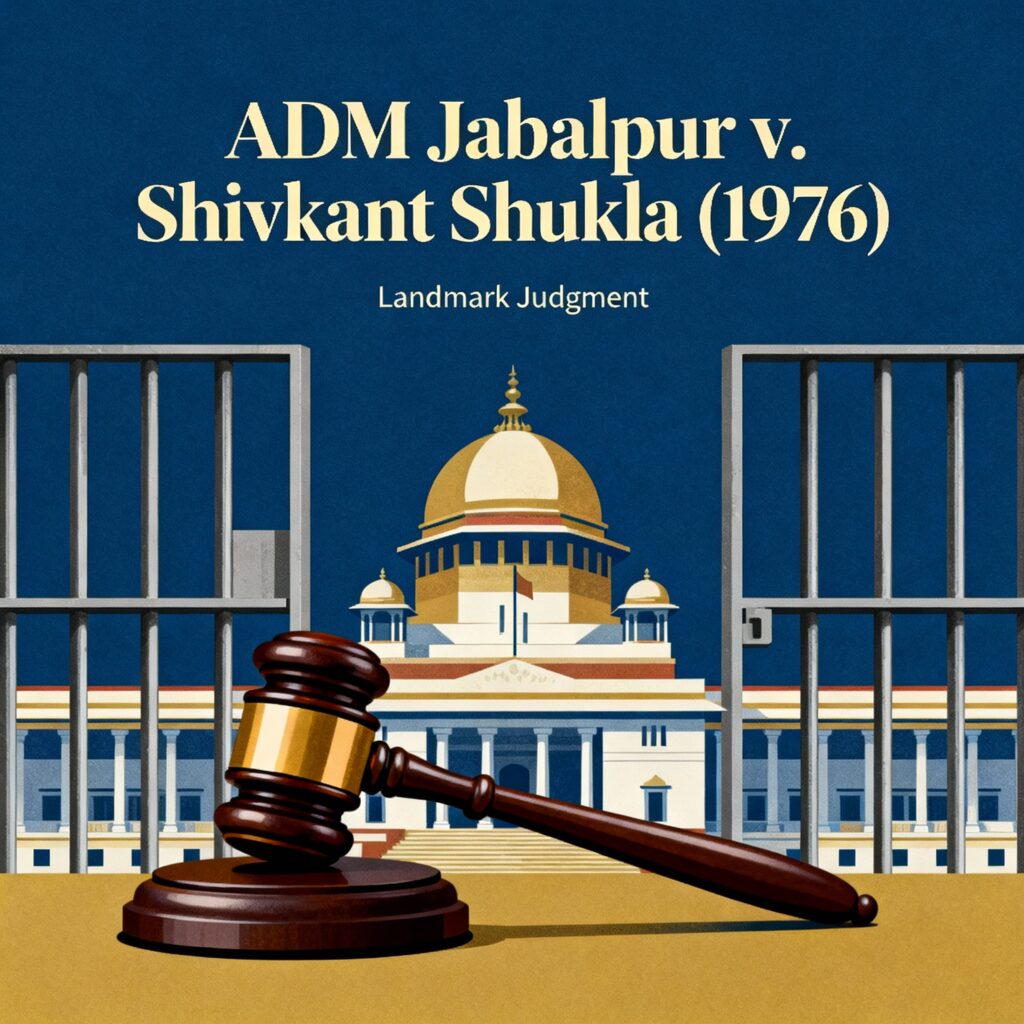Published on: 21st October 2024
Authored by: Upasna Upadhyay
Dr. Rizvi College of Law
ABOUT THE CASE:
CITATION: AIR 2006 SUPREME COURT 980
CASE NO.: Writ Petition (civil) 257 of 2005
PETITIONER: Rameshwar Prasad & Ors.
RESPONDENT: Union of India & Anr.
DATE OF JUDGEMENT: 24/01/2006
BENCH: Y.K. Sabharwal, B.N. Agrawal & Ashok Bhan[1]
INTRODUCTION:
Rameshwar Prasad v. Union of India (2006) is a landmark Indian constitutional case that questioned the balance between state and union powers in the context of federalism. The case arose from the dissolution of the Bihar Legislative Assembly in 2005, following a Governor’s recommendation. The Supreme Court ruled that the dissolution was unconstitutional, setting a precedent for the misuse of constitutional powers in the federal structure. The judgment examined the President’s powers under Article 356, the Governor’s role, and the principles of federalism and democracy in the Indian Constitution. The case highlights the importance of balancing state and union powers in federalism.
FACTS OF THE CASE:
The challenge in these petitions is to the constitutional validity of notification, ordering dissolution of the Legislative Assembly of the State of Bihar. It is a unique case, as earlier cases were those where the dissolutions of Assemblies were ordered on the ground that the parties in power had lost the confidence of the House. The present case is of its own kind where before even the first meeting of the Legislative Assembly, its dissolution has been ordered on the ground that attempts are being made to cobble a majority by illegal means and lay claim to form the Government in the State and if these attempts continue, it would amount to tampering with constitutional provisions.[2]
In the Rameshwar Prasad v. Union of India (2006) case, the Bihar Legislative Assembly was dissolved in May 2005 due to no party securing a majority in the February elections. Governor Buta Singh reported no stable government and concerns about horse-trading, leading to the President’s Rule.
Rameshwar Prasad and other leaders challenged the dissolution of the NDA government in the Supreme Court, arguing it was unconstitutional and preventing opposition parties from forming a government. Fresh elections in 2005 confirmed the NDA’s majority.
In 2006, the Supreme Court ruled the dissolution of a government unconstitutional, citing insufficient grounds for the Governor’s report. Despite not reversing the dissolution due to new elections, the court emphasized the importance of safeguarding democratic processes.
ISSUES:
(i) Is it permissible to dissolve the Legislative Assembly under Article 174(2)(b) of the Constitution without its first meeting taking place?
(ii) Whether the proclamation dissolving the Assembly of Bihar is illegal and unconstitutional?
(iii) If the answer to the aforesaid question is in affirmative, is it necessary to direct status quo ante, as to restore the legislative assembly as existed in suspended status and to cancel fresh elections conducted by the Election Commission?
(iv) What is the scope of Article 361 granting immunity to the Governor?[3]
LAWS DISCUSSED IN THE CASE:
- Article 356 of the Constitution of India- The article enables the President of India to impose President’s Rule in a state if they believe governance cannot be carried out according to the Constitution. The central issue in this case was whether Article 356 was justified in dissolving the Bihar Legislative Assembly.
- Article 361 of Indian Constitution- Provides that the Governor shall not be answerable to any court for the exercise and performance of the powers and duties of his office or for any act done or purporting to be done by him in exercise and performance of those powers and duties.
- Article 188 of Indian Constitution- Every member of the Legislative Assembly or the Legislative Council of a State shall, before taking his seat, make and subscribe before the Governor, or some person Appointed in that behalf by him.
- Article 174(2)(b) of Indian Constitution – The Governor may from time to time dissolve the Legislative Assembly.
- Article 74 of the Constitution of India- This article mandates that the President shall act in accordance with the advice of the Council of Ministers. The case examined whether the President, acting on the Governor’s recommendation.
- Article 163 of the Constitution of India- This article deals with the discretionary powers of the Governor. The case scrutinized whether the Governor acted within his constitutional discretion when recommending the dissolution of the Assembly.[4]
ARGUMENTS:
- Petitioners- The petitioners argued that the dissolution of the Bihar Legislative Assembly was unconstitutional, as the Governor’s report was speculative and did not provide concrete evidence for a stable government. They claimed that Article 356 was misused to prevent the opposition from forming a government. The Governor was accused of acting beyond his constitutional powers by recommending dissolution before the Assembly could convene, while petitioners argued that the Governor should have allowed the Assembly to meet and test government formation. The Governor’s report on horse trading was deemed factually incorrect and fictional, as the Speaker has the authority to make decisions regarding mergers and disqualifications due to defection or horse trading. The Governor’s actions were deemed mala fide in law, irrational, and based on mere ipse dixit, making them unsustainable in law. The Court, based on the Nine Judge Bench judgment in S.R. Bommai and Ors. V. Union of India and Ors., argued that the Court should quash the notification and restore the legislative assembly through judicial review.
- Respondents- The Indian Constitution grants immunity to the Governor, as stated in Article 361. Article 361(1) states that the Governor is not accountable to any court for the exercise of their powers and duties, and notice cannot be issued to them due to this immunity, particularly emphasizing the S.R. Bommai case. Respondents defended dissolution as necessary to prevent horse-trading and unethical practices, as highlighted in Governor’s report, and in the best interest of maintaining democratic integrity. The Governor, under Article 163, was deemed to have exercised his constitutional discretion in good faith, preventing the emergence of an unstable and opportunistic government.
JUDGEMENT:
The court concluded that no political party or coalition can claim majority in the Legislative Assembly. After consulting with all parties and groups and Independent MLAs, it was determined that no party can form a government commanding a majority in the House. This results in a complete inability of any political party to form a stable government, indicating a failure of constitutional machinery. And court recommend that the present newly constituted Assembly be kept in suspended animation for the present, and the President of India is requested to take such appropriate action/decision, as required. Court noted that the National Commission on Constitutional Review identified that increasing instability in elected governments is due to opportunistic political realignment, highlighting the importance of a stable and strong government. The commission also noted that the open alignment of political party members undermines democracy.[5]
The Supreme Court declared the President’s Proclamation of dissolving the state Assembly unconstitutional, but chose not to reinstate it due to upcoming elections. The court emphasized that the Governor should avoid controversies like disqualifying Legislative Assembly members, citing constitutional provisions requiring the Governor to consult the Election Commission. The court ruled that the Governor, despite being the primary actor, misled the Union Council of Ministers, leading to the President’s advice and the issuance of a challenged Proclamation. The court criticized the Governor’s actions as insincere and alleged a political party’s motive.[6]
ANALYSIS OF THE CASE:
- The Rameshwar Prasad v. Union of India (2006) case is a pivotal judgment in Indian constitutional law, particularly in its examination of the balance of power between the state and the Union. The precedent established has made it harder for the central government to impose President’s Rule in states without valid constitutional reasons.
- The Punjab and Haryana High Court and the High Court of Andhra Pradesh have held that a proclamation under Article 356 is considered a prerogative power by the executive branch of government, and therefore beyond constitutional judicial review. In Rao Birinder Singh v. Union of India, the Punjab and Haryana High Court ruled that it had no jurisdiction to review the material upon which the President was satisfied. The Supreme Court in State of Rajasthan v. Union of India unanimously dismissed the suit.
- The Supreme Court in S.R. Bommai v. Union of India established the scope of judicial review under Article 356, determining its reviewability on grounds such as the justification of relevant data and the absence of mala fide reasoning.
- The Supreme Court’s ruling emphasizes the significance of federalism in India’s constitutional framework, ensuring the use of Article 356 doesn’t undermine the democratic process in states.
- The judgment cautioned against political misuse of the Governor’s office and established a precedent for the Governor’s report, which forms the basis for President’s Rule, to be based on concrete facts, not apprehensions or motivations.
CONCLUSION:
The Constitution does not specify that dissolution of the State Legislature must occur after the first meeting, allowing it to be dissolved without such a meeting. The Court deemed the Bihar Legislative Assembly’s dissolution unconstitutional, emphasizing the necessity of objective, evidence-based decision-making when implementing President’s Rule and rejecting Article 356 as a political tool. The judiciary plays a crucial role in ensuring democratic processes and preventing the misuse of executive power. The Proclamation issued under Article 356 is declared to be unconstitutional.
REFERENCES:
[1] ‘Rameshwar Prasad & Ors vs Union Of India & Anr on 24 January 2006’ (Supreme Court of India) <https://main.sci.gov.in/jonew/judis/27437.pdf>
[2] ‘Rameshwar Prasad and Others. Vs. Union of India (UOI) and Others’ (MANU/SC/0399/2006) <https://manupatracademy.com/legalpost/manu-sc-0399-2006>
[3] Ibid
[4] CONSTITUTION OF INDIA
[5] ‘Rameshwar Prasad & Ors vs Union Of India & Anr on 24 January 2006’ (Supreme Court of India) <https://main.sci.gov.in/jonew/judis/27437.pdf>
[6] ibid


